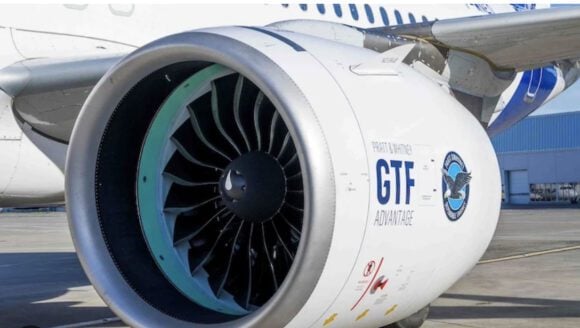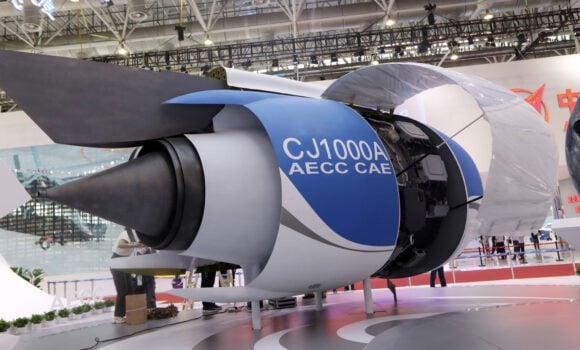Yesterday the FT published an interesting story about how the UK is concerned with Rolls-Royce. The company has come under pressure with missing its numbers. Today came news that two senior managers are leaving the firm.
Yesterday the FT also mentioned that P&W and Siemens are seen as potential bidders to take over the firm. We had considered the possibility of P&W doing this some while ago.
Even as the UK is rightly concerned with any move on Rolls-Royce, it is also important to note that the UK has a liberal takeover regime. Which is why Rolls-Royce has all sorts of protections, precisely because it is an important national asset as an engineering center of excellence.
What set off the current tension? An activist investor based in San Francisco, ValueAct, caused the first flutter. Ostensibly ValueAct is not a threat to the current management. But even as they may pose no imminent threat, there are a host of stories about the UK nationalizing Rolls-Royce’s nuclear submarine business. A look at a Google search of news on Rolls-Royce looks ominous. A week ago, a leading British investment fund, Equity Income Fund, sold its entire stake in Rolls-Royce. Fund manager, Neil Woodford wrote about his change of heart: “What has changed? Primarily?.?.?.?my long-term confidence in the business model. Rolls-Royce civil aerospace engine business is pretty opaque and difficult to analyse.”
And that is a key item for us, as we consider the news. The selection by Emirates of Rolls-Royce for its next round of A380s engines was odd. The incumbent, Engine Alliance, offered the airline a deal at an unprecedented price. Emirates still selected Rolls-Royce, which leads one to conclude the deal was irresistible. Engine deals are priced over a long term power by the hour arrangements and spares. This is how engine OEMs make their profits. What kind of deal did Rolls-Royce offer? They must have bought the order and it may be frightfully expensive. Neither side is talking. However we understand that two people key to the Emirates deal are former CEO John Rishton and current Aerospace President Tony Wood. Oh, to be a fly on the wall when new CEO Warren East learned the details of the Emirates deal.
Even as Rolls-Royce did that deal, they were working the new A350-1000 engine, while delivering A350XWB engines for the a program that has gone rather slowly in its first year of deliveries. The company won an exclusive A330neo engine deal – meaning more R&D expense before any revenues even as it borrows from existing IP.
These are high profile projects, but volumes are small compared to the single aisle business, where Rolls-Royce has no offering after its sold its stake in the V2500 to P&W. Looking at the sales P&W has accumulated with its GTF, perhaps Rolls-Royce should have increased its involvement rather than sell. Rolls-Royce is now working Liebherr on its gear solution for its Superfan engine – with attendant R&D expenses.
The smart money suggests that Rolls-Royce is vulnerable. The UK government is no doubt pondering next steps. Almost certainly so is P&W; its parent UTC just got $9bn from selling Sikorsky. UTC is looking for ways to gets is share price back up again as the Sikorsky sale didn’t help as it was expected to. Buying a stake in Rolls-Royce would certainly lead to a review by the market of UTC, after all UTC is one of only a few companies that knows how to extract value from Rolls-Royce’s civil aerospace business. Any interest from Siemens only adds to the value of getting a piece of Rolls-Royce cheaply.
Views: 0




Remember the DOD creative accounting when hammers were valued at 600$ so that money could be funneled to black projects?
Well, it sure feels like the aerospace industry is like that now. The industrial complex finally got tainted by all this voodoo ecenomics that have been going for so long in the military and government side.
Now you can spend trillions on F35s and funnel some of that to the civilian side while while still raking in record tax breaks (that 9.5 billion tax break from the state didn’t even register in the news while in Canada, we go nuts [rightfully so] over 1 billion dollars in financial help).
Or how about that A400M program that bleeds money to no end. How much money was also creatively thrown into that black hole only to re-appear as 50% rebates on A320Neos?
Yeah, this is all in my head and I can’t substantiate anything. But we all know this is how it works. Like those 600$ hammers…
Taxpayers of the world unite, stop all this voodoo accounting. Maybe when this bubble blows like the mortgage crisis, maybe then we’ll do something about it. That’s how humans work anyway.
Pierre
As driven as Emirates has been on lowering fuel usage, you have to kind of wonder if Rolls-Royce have some new trick in the Trent’s to make them more attractive.
Rolls-Royce are making a profit, it’s just that it’s far too small relative to equity. They have an enterprise performance problem. Strategically they are fairly well-positioned, but they need to control costs so that their incomes improve to where they should be. Eliminating a layer of management is a start.
Rolls-Royce appears to be in the same predicament Bombardier was until recently. It will be interesting to see how far the UK Government is willing to go to save one of its most valuable national asset. When RR was nationalized in 1971 the Conservatives were in power, like they are again today. But the world has changed a lot since then. This kind of solution might be more difficult to accept in the more Darwinian business context that we live in today. The idea that Pratt & Whitney would acquire it is equally difficult to imagine. Not that they would not be interested, with all the technology developed by RR in recent years, and the fact they are involved in the widebody sector, where P&W is weak right now. It actually looks like a perfect marriage. But the only way Pratt could do this is if the assets were separated from the debt burden. The latter would be assumed by the government within a separate legal entity so that Pratt could save this jewel of the British Crown. But what about other companies like Safran, which is also weak in the widebody engine sector? Or BMW, which already owns the name and is also involved in the aircraft engine business? Or could BAE be forced by the government to intervene? After all BAE depends on the government for many of its lucrative contracts. Of course the most obvious player remains P&W. But what would they do with the assets, and how much would they have to pay for them? And how would they integrate not only two different corporate cultures but also to different national cultures? How willing to work for the Americans would the British employees be? It helps that they speak the same language, but other than that they have little in common. Even the technology is completely different: two-spool for Pratt & Whitney and three-spool for Rolls-Royce. We also have to keep in mind that about 80% of mergers of this kind turn out to be a failure.
Rolls are not in danger. At all.
The financial anal-ists are grumpy as profit margins aren’t high enough to satisfy their greedy little mitts. Cashflow is still positive.
It’ll be a strange one if a multi-billion pound business is broke on the back of reduced (positive) cashflow.